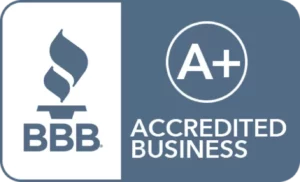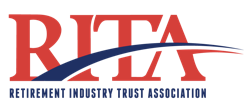Most Important Self-Directed IRA Rules
When choosing to invest with a Self-Directed IRA, it’s critical to know the rules that govern them. One false move and your IRA will become disqualified.
Disqualification means that anything within your IRA will be distributed to you. Additionally, all money and assets will be treated as earned income. In other words, it gets taxed. Also, you no longer have tax-advantages with your investments.
Here, we’ll talk about the six most important Self-Directed IRA rules when you decide to self-direct your account.
It’s important to note that these rules also apply to Self-Directed Health Savings Accounts and Coverdell Education Savings Accounts.
1. Investments You Can Make
As long as your Self-Directed IRA custodian allows it, you can invest in just about anything you like. There are few things the IRS prohibits. These include life insurance and most collectibles (such as art and antiques). Most importantly, you cannot invest in something that’s considered a prohibited transaction. This is where many people run afoul of the rules (we’ll dig deeper into this later).
You can invest in anything else using a self-directed IRA, such as real estate, precious metals and certain coins, cryptocurrencies, race horses, etc. The list is endless. If you so choose, you can also invest in traditional assets like stocks, bonds and mutual funds. However, you don’t need a special custodian for these investments.
2. The Prohibited Transaction Rules
Once you choose an IRS-approved investment, you must make sure you follow the prohibited transaction rules. Simply put, you cannot personally benefit from an IRA investment. Only the IRA can benefit. You already receive tax-breaks by investing with an IRA. You cannot then receive an additional benefit.
As a result, you are a “disqualified person”. Further, your lineal descendants, ascendants, and spouses are also disqualified persons. These include your parents, grandparents, children and grandchildren.
An example of a prohibited transaction is using your Self-Directed IRA to invest in a rental property and then renting it out to your daughter. On the plus side, you can rent out the property to your brother, aunt or friend.
3. Freedom!
While not necessarily a rule, the power of freedom is an important factor to consider when self-directing your IRA. The ability to make an investment in a timely matter may make or break you (figuratively speaking). This ability is known as “checkbook control.”
Checkbook control allows you to make any investment you wish, whenever you want. You don’t need to ask permission, also known as custodial consent, before investing. Not all custodians offer this type of freedom, therefore you may miss out on an investment while waiting for permission.
4. Early Withdrawal Penalties
The IRS considers 59 ½ as the age you may begin withdrawing from your retirement account(s). Most withdrawals before this age will incur a 10% early withdrawal penalty. There are a few exceptions, such as becoming permanently disabled, a first time home purchase and higher education expenses.
This penalty is to encourage savers not to touch their retirement funds too soon. However, if you have a Roth IRA, you are allowed to withdraw your contributions at any time. Note: earnings will still be subject to the penalty. For the next 11 years, you are allowed, but not required, to distribute funds from your IRA. This brings us to our next rule.
5. Required Minimum Distributions
Once you reach age 73, you must start making withdrawals from your traditional IRAs. The IRS has allowed you to defer your taxes for decades, but now it’s time to pay up. Every year, you must withdraw the amount set forth by the IRS based on your account balance and age. This amount is considered income and will be taxed accordingly. Failure to take an RMD will result in a 50% (yes 5-0) penalty on the amount not withdrawn.
This will occur every year until it is rectified. Again, Roth IRAs are not subject to the RMD rules, since your contributions were after-tax.
6. Contribution Limits
Finally, a contribution limit is the amount of funds you may contribute to your Self-Directed IRA annually. The IRS sets this amount each year and may adjust it in future years based on inflation. As it stands for 2024, the maximum you may contribute to an IRA is $7,000 (plus an additional $1,000 if you are at least age 50).
If you accidentally over-contribute to an IRA, you can usually remedy the situation without penalty as long as you do so in a timely manner. However, if the excess amount is not removed, you will be hit with a 6% penalty each year until it’s gone.
By following these most important IRA rules, along with finding the right Self-Directed IRA custodian, you’ll be well on your way to a great retirement. A Self-Directed IRA offers one a multitude of alternative investment opportunities. However, it’s a complicated account that, by law, you cannot administer personally. Knowing the rules is one thing; learning them is completely different.
Get in Touch
This article barely touches on the complexities of these types of accounts. This is why it’s imperative to work with a self-directed retirement expert when self-directing your IRA. If you have questions, contact IRA Financial Group directly at 800-472-1043.
These are just six of the most important Self-Directed IRA, HSA, Coverdell ESA rules, but there are many to consider. Our experts are available to familiarize you on additional rules regarding your Self-Directed retirement plan.











